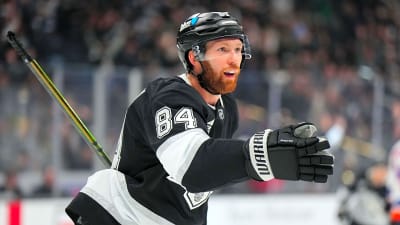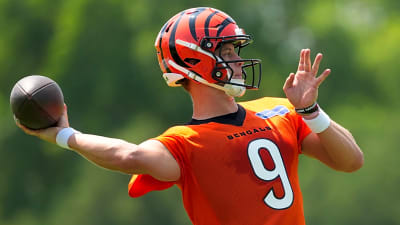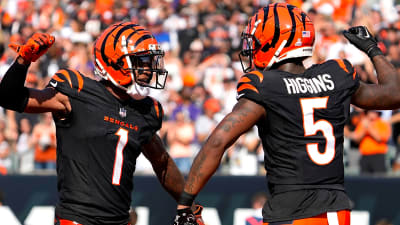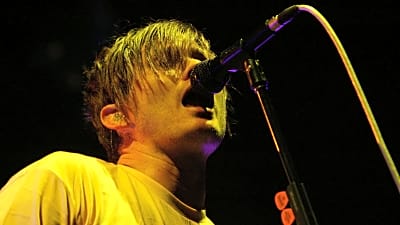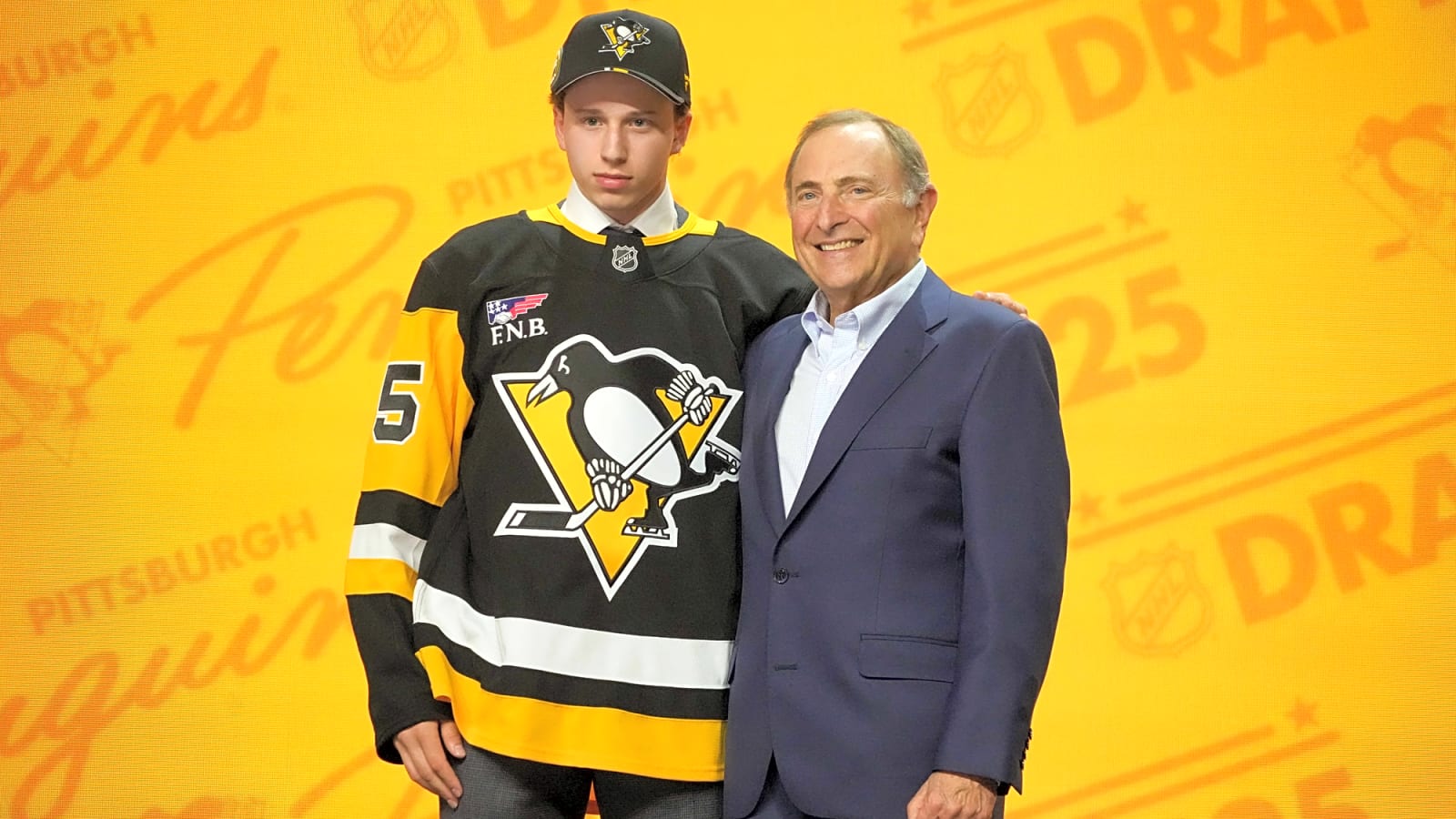
The Penguins have been identified as the one true seller in the NHL this summer and for good reason. They have an aging core that can no longer carry a team, depth that is underwhelming (to say the least), and have arguably been the easiest team to play against from a physical standpoint.
All of that has led general manager Kyle Dubas to pivot into a rebuild that many have forecasted for quite some time. The Penguins made the playoffs for 16 straight seasons but haven’t qualified since 2021-22 and look destined to finish near the bottom of the standings next season.
This has led many to speculate that Sidney Crosby would look to play elsewhere; however, those claims have been disputed by many outlets. For his part, Crosby has balked at these rumours, going so far as to sign a two-year extension to remain in Pittsburgh through what will likely be some painful seasons.
All of this begs the question: When will the Penguins be a competitive team again?
According to Josh Yohe of The Athletic, Pittsburgh has set its sights on next summer as the time to be aggressive buyers. Currently, 2026 looks like a great year to have cap space, with players like Connor McDavid and Cale Makar slated as of right now to become UFAs.
That list of free agents will likely shrink, but there could still be high-end talent under 30 available, which might help the Penguins move beyond their rebuild. As of now, Pittsburgh has over $52MM of available cap space next summer (according to PuckPedia). While this number will decrease over the year, the point remains that they can choose to be major buyers if they wish.
The more likely scenario for the Penguins is that they spend the summer of 2026 adding to their prospect pool with their eight 2026 draft picks (and any additional picks they gain over the next year) or perhaps using those picks and other assets to acquire NHL players. Dubas has made it clear that he’s targeting young, NHL-ready players, and it’s hard to see that approach changing between now and summer 2026.
Two major wild cards will determine how long it takes the Penguins to become a Stanley Cup contender again. The first is where they fall in the 2026 draft order.
If Pittsburgh performs as poorly as many expect, they could win the draft lottery and get the chance to select Gavin McKenna. NHL conspiracy theorists would surely love to dissect that scenario if it were to happen, given that Pittsburgh has had several generational players come through the city via the draft.
The chances of Pittsburgh pulling that off, of course, are nowhere close to a given. That said, there are plenty of solid alternative options with forwards Ivar Stenberg or Ryan Roobroeck.
Neither of these players would have the immediate impact of a McKenna, but they would help the Penguins keep their rebuild on track. Pittsburgh can’t count on winning a lottery to speed up their rebuild, but if they did, it would accelerate the process.
The second major wild card for the Penguins’ rebuild is what happens this summer with the veterans whose names have come up in trade rumors – forwards Bryan Rust, Rickard Rakell, and defenceman Erik Karlsson. Rust has reportedly been a hot commodity, and if Pittsburgh can trigger a bidding war, he could bring back a return that accelerates the team’s journey back to relevance.
The Penguins have made several short-term signings already this summer, including forward Anthony Mantha, who could play in Pittsburgh’s top six should they move on from a winger like Rust. Pittsburgh also has Rakell available, and if they can negotiate a first-round pick for the 32-year-old winger, it would provide another top-tier lottery ticket to help try and draft a future star in Pittsburgh.
Rakell is a difficult trade to forecast, as he is on a bargain contract and capable of scoring 30+ goals. He could be a key piece for a team looking for a winger but missing out on impact players in free agency.
Finally, with Karlsson, the Penguins have a piece that could be very desirable if his cap hit were to fall under $7MM, and less attractive if it exceeds that. Karlsson has long been a polarizing player, but as we recently saw with defenseman Seth Jones, sometimes a player who is overpaid can be more appealing when their cap hit better aligns with their level of play.
Karlsson is no longer a $10MM player, but he can still be very impactful with less responsibility. He maintains his offensive flair, posting 50+ point seasons in both years with the Penguins, and remains excellent at zone exits and transitional play.
If Pittsburgh is willing to retain a significant portion of his cap hit, they could acquire some solid young pieces that will help push them forward in their rebuild. However, if they retain Karlsson, they might struggle to trade him for anything of value, which won’t benefit them long term.
Just like with any rebuild, the Penguins will need a lot of luck for it to go as planned. Having lottery ball luck next year, as well as succeeding with moves to shed veterans, will speed up their rebuild.
If they don’t, it could lead to a rebuild that lasts half a decade or more. As the Buffalo Sabres and Edmonton Oilers have shown over the past 15 years, top-end draft picks and finishing at the bottom of the standings do not guarantee success, and even when you get lucky with some picks and trades, those players you had high hopes for can fall apart.
The truth is that no one can predict how long the Penguins’ rebuild will take. Still, much of the groundwork for a successful rebuild will be laid over the next 12 months, and the rest will depend on how well the players already in the system develop moving forward.
At this year’s draft, Pittsburgh identified a specific type of player they were seeking and went out of their designated slot for almost the entire draft to acquire players that fit their vision. That strategy went against the consensus and could backfire on Dubas, but it was a brave and gutsy approach, perhaps one of the most unorthodox displays in recent memory.
However, that is what Dubas and the Penguins will need to do if they want to become relevant sooner rather than later – think outside the box, take big chances, and trust that their pro and amateur scouting is accurate about the players they are targeting. 2026 might be the target to turn the corner on the rebuild, but it probably isn’t the year they expect to contend.
Given the time it takes for prospects to adjust to the professional game, a safer bet is for the Penguins to become playoff hopefuls in the 2027-28 season. At that point, it’s hard to say whether Crosby will still be around, but if he is, the Penguins’ young players will have perhaps the best mentor a young NHLer could ever ask for.
Photo by Charles LeClaire-USA TODAY Sports
More must-reads:
- Best, worst value contracts signed so far in NHL free agency
- Five worst signings from the first day of NHL free agency
- The 'First-overall NHL Draft picks' quiz
Breaking News
Trending News
Customize Your Newsletter
 +
+
Get the latest news and rumors, customized to your favorite sports and teams. Emailed daily. Always free!
